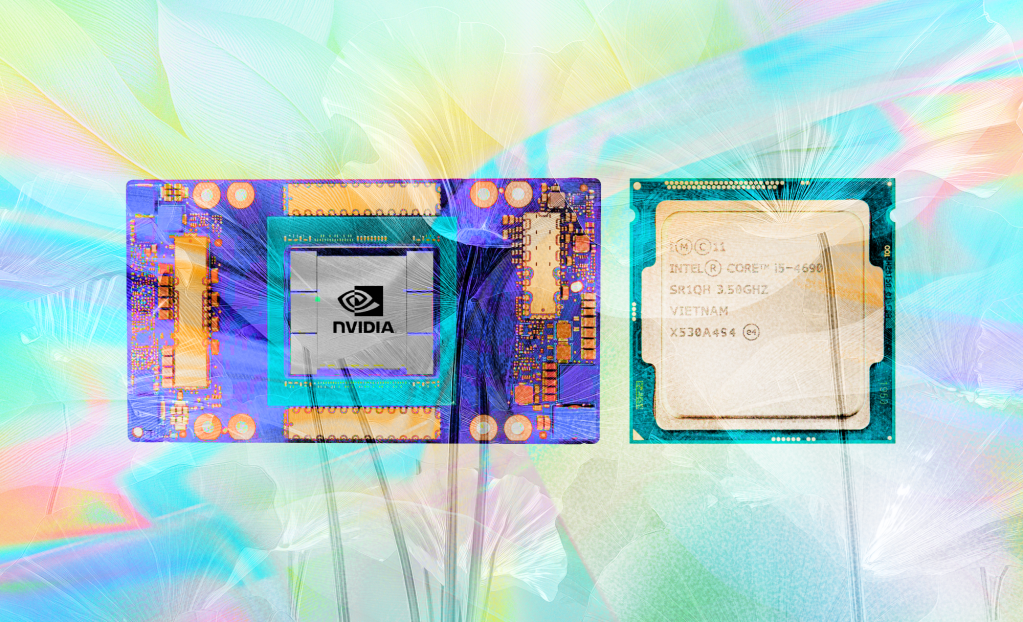How NVIDIA will benefit from its $5 billion Intel investment
The world’s biggest AI chipmaker can tap into Intel’s long experience in cutting emissions, water consumption and other ESG impacts. Read More

- NVIDIA’s first two new science-based targets weren’t adopted until 2025.
- Intel has been reducing its emissions for more than two decades.
- Key focus for both: Continuous improvements in energy efficiency for their chips.
NVIDIA, the world’s most valuable company with a $4.3 trillion market capitalization, is hyper-focused on energy efficiency. It claims the world could save 40 trillion watt-hours of electricity annually by using technology accelerated with its graphics processors.
That message is meant to resonate with NVIDIA’s biggest customers — including Amazon Web Services, Google and Microsoft — which desperately need to speed up AI processing times to have any hope of reaching their emissions reduction pledges.
Compared with rivals Advanced Micro Devices and Broadcom, however, NVIDIA’s broader corporate sustainability strategy is immature. Those other companies have worked on emissions reductions in their operations and supply chains for at least five years. NVIDIA’s first emissions reduction targets were validated in early 2025.
NVIDIA’s new joint development partnership with Intel changes the equation, providing the AI chip leader with access to two decades of institutional knowledge about reducing the emissions, waste and water usage associated with making computer chips.
Fast-growing footprint
NVIDIA’s greenhouse gas emissions doubled from 2023 to 2025, to 6.9 million metric tons of carbon dioxide equivalent, according to its 2025 sustainability report. Its first absolute emissions reduction target, disclosed in June, calls for a 50 percent cut for its operations (Scope 1) and electricity consumption (Scope 2) by 2030.
Those emissions are essentially a rounding error in the company’s total carbon footprint: less than 1 percent. That’s because NVIDIA is a “fabless” company, meaning it relies on other companies to manufacture its chips. The other big impact for NVIDIA is the energy its chips use to train AI learning models and run generative AI applications. Both of these fall into Scope 3.
To get a handle on where it might be able to influence cuts in that footprint, NVIDIA committed two years ago to encouraging two-thirds of its suppliers to adopt validated emissions reduction targets by 2026. It surpassed the supplier engagement goal a year early with 80 percent for the fiscal year ended Jan. 26.
NVIDIA hasn’t set an absolute reduction target for its Scope 3 impact. Instead, it has pledged to reduce the emissions intensity from use of its products by 75 percent per PetaFLOP, or one quadrillion floating-point operations per second. “Reducing energy and emissions per computation represents NVIDIA’s biggest opportunity to reduce emissions and to support global sustainability efforts,” the company said in its report.
NVIDIA plans to start reporting on its new intensity metric in 2026, along with a more comprehensive inventory of its most significant emissions sources.
Best practices to share
Against that backdrop, Intel’s work on reducing the emissions, water usage and waste associated with manufacturing operations will be a benefit when the two start making the new chips promised under their agreement announced Sept. 18. Their $5 billion partnership centers on two areas: data center technology that combines NVIDIA and Intel technology in custom AI offerings; and an integrated processor for personal computers.
Intel’s overall carbon footprint is more than triple that of NVIDIA’s at 25.1 million metric tons. But it would be far larger without the billions of dollars the company has invested in chemical substitutions, energy conservation and process optimization. Intel issued a $1.25 billion green bond in 2022 to pay for these investments; it allocated $845 million of that amount as of its latest report.
Those investments are paying off: Intel has cut absolute emissions by 70 percent since its peak year in 2006. It’s looking for a 10 percent reduction before 2030.
About 4 percent of Intel’s emissions come directly from the company’s offices and manufacturing plants, along with the energy necessary to run them, as of Intel’s 2024-2025 corporate responsibility report. Intel estimates that impact would be about 10 times larger without the investments it has made over the past two decades to cut the emissions associated with semiconductor manufacturing.
Energy conservation is a huge factor in the reductions that Intel has been able to achieve. Between 2020 and 2024, Intel reduced its electricity consumption by 2.4 billion kilowatt-hours. The cost for those projects: $104 million. The money saved: $150 million.
Shared goal: Run chips with less energy
Intel shares NVIDIA’s belief that improving the energy efficiency of its processors will be key to reducing Scope 3 emissions. The company estimates that the chips that it sold in 2024 will contribute 3.2 million metric tons of emissions annually.
To reduce that number, Intel has pledged to increase the energy efficiency of its chips by tenfold between 2019 and 2030. NVIDIA also strives for continuous improvements but hasn’t publicly declared a similar goal.

Subscribe to Trellis Briefing
Featured Reports

The Premier Event for Sustainable Business Leaders
















